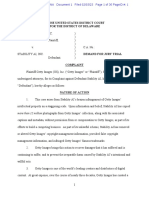0% found this document useful (0 votes)
41 views8 pagesL - 1 Introduction To Web Development and MERN
The document provides an introduction to web development, focusing on the MERN stack, which includes MongoDB, Express.js, React, and Node.js. It explains the roles of front-end and back-end development, the advantages of using MongoDB for flexible data storage, and the key features of Express.js and React for building efficient web applications. Additionally, it discusses the benefits and drawbacks of each technology within the MERN stack, emphasizing its suitability for modern web applications.
Uploaded by
hinoxis781Copyright
© © All Rights Reserved
We take content rights seriously. If you suspect this is your content, claim it here.
Available Formats
Download as DOCX, PDF, TXT or read online on Scribd
0% found this document useful (0 votes)
41 views8 pagesL - 1 Introduction To Web Development and MERN
The document provides an introduction to web development, focusing on the MERN stack, which includes MongoDB, Express.js, React, and Node.js. It explains the roles of front-end and back-end development, the advantages of using MongoDB for flexible data storage, and the key features of Express.js and React for building efficient web applications. Additionally, it discusses the benefits and drawbacks of each technology within the MERN stack, emphasizing its suitability for modern web applications.
Uploaded by
hinoxis781Copyright
© © All Rights Reserved
We take content rights seriously. If you suspect this is your content, claim it here.
Available Formats
Download as DOCX, PDF, TXT or read online on Scribd
/ 8
























































































